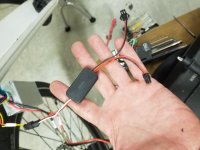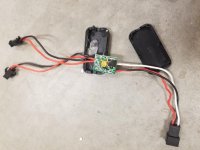Hi everyone!
When I connect my multimeter to the headlight wires without the light, they read 52.4V when lights are turned on. When I connect the light, it immediately drops to 6.x volts. When I disconnect the light from the wires, it slooowly increases back to 52.4V. If I turn the lights off and on at the control, it resets to 52.4V immediately.
It started with the stock light. Thought it was broken because it was so dim. Blew up a nice Lezyne light because I didn't check the output first and the initial 52V jolt fried it. Ordered a cheap light from Amazon for up to 60V input and it was great for a few seconds before it suddenly went dim. Thought "that's what I get for going cheap" and ordered a nice light from Juiced. Same thing, but this time I monitored the output and discovered it wasn't the lights at all. But what is it?
Everything else on the bike works great.
Thanks in advance!
When I connect my multimeter to the headlight wires without the light, they read 52.4V when lights are turned on. When I connect the light, it immediately drops to 6.x volts. When I disconnect the light from the wires, it slooowly increases back to 52.4V. If I turn the lights off and on at the control, it resets to 52.4V immediately.
It started with the stock light. Thought it was broken because it was so dim. Blew up a nice Lezyne light because I didn't check the output first and the initial 52V jolt fried it. Ordered a cheap light from Amazon for up to 60V input and it was great for a few seconds before it suddenly went dim. Thought "that's what I get for going cheap" and ordered a nice light from Juiced. Same thing, but this time I monitored the output and discovered it wasn't the lights at all. But what is it?
Everything else on the bike works great.
Thanks in advance!



